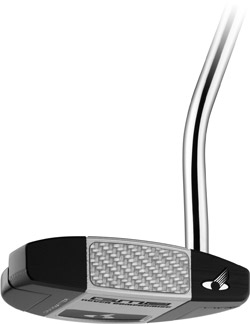 The distinctive black and grey color scheme of Never Compromise’s putters make them a stand-out on the PGA Tour. It doesn’t hurt that Cleveland Golf – Never Compromise’s parent company – has two of the world’s top eight golfers stroking putts with the black and grey putters. David Toms and Vijay Singh guarantee Never Compromise abundant airtime.
The distinctive black and grey color scheme of Never Compromise’s putters make them a stand-out on the PGA Tour. It doesn’t hurt that Cleveland Golf – Never Compromise’s parent company – has two of the world’s top eight golfers stroking putts with the black and grey putters. David Toms and Vijay Singh guarantee Never Compromise abundant airtime.
There’s a story behind the color scheme (though it’s not nearly as exciting as the tale about lightning striking a black putter and burning off the finish, leaving only a silver/grey strip in the middle) but at this point it’s become more a marketing gimmick. After all, TV viewers may not be able to tell a Scotty Cameron Newport 2 from a Ping Anser, but they can pick a black-and-grey Never Compromise putter from anything else.
Unfortunately, marketing doesn’t make putts. I had the opportunity to try the Gray Matter 2 – Half Mallet (or “GM2-HM” for short) the past few weeks, and I made my share of putts. Read on for more.
Design and Technology
The GM2-HM (I’d link to its web page, but the Never Compromise website is entirely Flash-based, earning no happy points from this Web consultant…) comes from a trio of “Gray Matter” putters. Two other models – the “MM” or mid-mallet and the “FM” are, like the “HM” reviewed here, mallet putters of varying shapes and sizes. The three putters in the “Gray Matter” line, unlike Never Compromise’s more traditional Milled or Speed Control series, all feature tungsten weights and a high MOI, following the recent trend in putter design.
MOI, or moment-of-inertia, is a measurement of how much a golf club resists twisting when a ball is struck somewhere other than the sweet spot. By moving the center of gravity (CG) back and away from the putter face, MOI goes up. As MOI goes up, “forgiveness” on off-center hits goes up. As forgiveness goes up, putts struck off-center roll truer to the intended line and with more distance control.
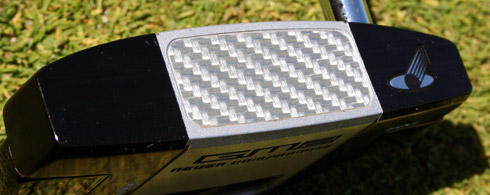
The “aluminum-infused composite weave insert” is pretty to look at if nothing else.
Never Compromise designers achieved reasonably high MOI in the Gray Matter series in a few ways. First, they built the putters from aircraft-grade aluminum, a very lightweight material. They built an aluminum-infused composite weave insert (see above) which is half as dense as aluminum itself, freeing up more weight. Designers then moved all the free weight to the heel and toe with tungsten weights, pushing as much weight to the perimeter of the putter as possible.
The end result is a face-balanced putter with more forgiveness and a higher MOI than you might believe possible in such a small package.
Looks and Setup
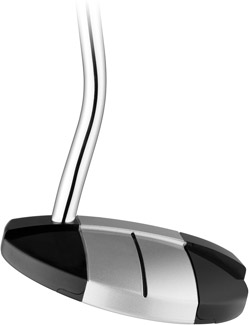 I prefer heel-shafted mallets, and the GM2-HM is the heel-shafted “half mallet” putter in the Gray Matter 2 series. It’s cambered from toe to heel and has a squared off face profile in the heel and toe for a compact look. A single black alignment line that stops about half an inch short of the putter face splits the grey portion of the crown and lets you know where the sweet spot is. The grey portion of the crown is the width of a golf ball and, in combination with the line, greatly eases the process of lining up the ball with the sweet spot of the putter. Like the Odyssey 2-Ball’s white alignment discs, the GM2-HM grey stripe is particularly effective at aiding alignment on putts inside of five feet.
I prefer heel-shafted mallets, and the GM2-HM is the heel-shafted “half mallet” putter in the Gray Matter 2 series. It’s cambered from toe to heel and has a squared off face profile in the heel and toe for a compact look. A single black alignment line that stops about half an inch short of the putter face splits the grey portion of the crown and lets you know where the sweet spot is. The grey portion of the crown is the width of a golf ball and, in combination with the line, greatly eases the process of lining up the ball with the sweet spot of the putter. Like the Odyssey 2-Ball’s white alignment discs, the GM2-HM grey stripe is particularly effective at aiding alignment on putts inside of five feet.
The GM2-HM, like most modern-day mallets, set up nicely behind the ball. The sole of the putter rested snugly behind the ball without twisting open or closed, and again, alignment was a breeze. The double-bend shaft does not have nearly as much offset as I’m used to in mallets, but it does allow you an unobstructed view of the ball at address, and that’s a welcome change.
When I took photographs of the putter (such as the one below in the address position) and compared the black line on the crown to the angle of the face, I found that they were not perpendicular. The face, relative to the line, was closed about 1.5°. I’ve seen a similar illusion before in the TaylorMade Monza Corza, so I’m not sure whether the camera is lying and my eyes are playing tricks on me or whether the putter face is actually mildly closed. I believe I’ve heard that some heel-shafted mallets employ a “closed” line to encourage a putting stroke that moves back to the inside.
Either way, I rely on alignment lines to align the putter, not to encourage me to stroke properly. After pulling several putts I began to question the easy alignment the GM2-HM seemed to provide me. My current putter, a Scotty Cameron Red X, has a good bit more offset than the GM2-HM and square alignment lines and is very true in its alignment. I wasn’t getting the same feeling from the GM2-HM.
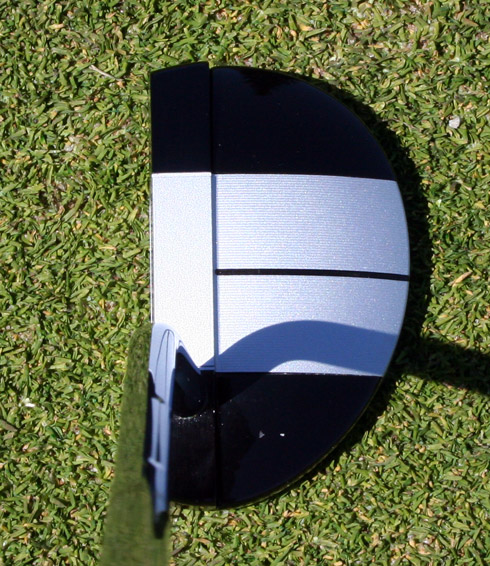
The GM2-HM is one of the cleanest, simplest looking high-MOI mallets on the market today.
After working for a few minutes with the two putters, I came upon a solution that seemed to work: a forward press. By adding a small forward press to my putting stroke when using the GM2-HM, the putts seemed to roll where I aimed them because the forward press locked my wrists into a “late” position, preventing me from releasing the putter head as early as my normal stroke would.
In addition to the forward press “trick,” I later discovered that if I could ignore the black line altogether, I could putt on the intended line using only the face of the putter as my alignment guide. Unfortunately, the black line is not always easy to ignore, and the “discomfort” caused by battling alignment aids is not a feeling I want to have as I line up a crucial putt. It’s too bad that I can’t custom order a GM2-HM with either no alignment line or with a simple dot to indicate the sweet spot.
Performance
Once I’d conquered the alignment issues, the GM2-HM performed incredibly well. I have an “inside/square/inside” putting stroke (also called the “door hinge” stroke), so a heel-shafted putter works well for me. After using a Bullseye-type putter back in the early 90s when I took up golf, I switched to the Ray Cook M1-X, a heel-shafted mallet, and have been a mallet fan ever since.
While Odyssey messes with steel inserts inside of polymer inserts and other putter designers employ polymer-based or softer steel inserts, Never Compromise designed a composite insert for the Gray Matter line. The insert, infused with aluminum, does not feel as soft as the polymer-style inserts, nor does it feel quite as firm as the metal inserts. It exists in a rather happy medium. The modern golf ball leaves the insert with consistent speed, making this putter one of the best I’ve tested at controlling distance.
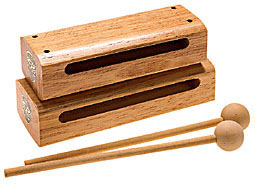 Another aspect of the composite woven insert is its unique sound. When struck on the sweet spot, the putter emits a bright, solid sound reminiscent of musical wooden blocks. When struck slightly off-center, the tone deepens and deadens slightly. Fortunately, the ball rolls with minimal distance or directional loss, making the GM2-HM a surprisingly forgiving putter in a very compact body.
Another aspect of the composite woven insert is its unique sound. When struck on the sweet spot, the putter emits a bright, solid sound reminiscent of musical wooden blocks. When struck slightly off-center, the tone deepens and deadens slightly. Fortunately, the ball rolls with minimal distance or directional loss, making the GM2-HM a surprisingly forgiving putter in a very compact body.
With only three degrees of loft (typically, putters are between two and five degrees), forward pressing did seem to exaggerate the amount of “skid” that balls had off the face of the GM2-HM. I felt, with the small forward press to correct the perceived alignment issues, that the putter was not doing much to lift the ball out of its depression and to get it rolling smoothly. Putts hit with a forward press jumped a lot more in the first few feet than I’d expect or want. Moving my ball position forward slightly helped alleviate this problem, but by that point I’d already made so many corrections that I was about to give up and go back to a putter that I knew and trusted.
Out of curiosity, I gave the putter to several other golfers and asked them to play a few rounds with it. Of the golfers, several had a forward press and a more forward ball position. These golfers, after commenting on the unique sound, expressed a good amount of appreciation for the putter. The few who, like me, employed a stroke without a forward press and a ball position more towards the middle of our stance, came back and told me that they’d had to make adjustments.
Extras and Specs
The GM2-HM is available in lengths of 34″, 35″, and 36″. The putter comes with a 70° lie, 3° of loft and a 340-gram head in all lengths, though it can be custom ordered in lengths of 32″, 33″, or 34″ with a 350-gram head.
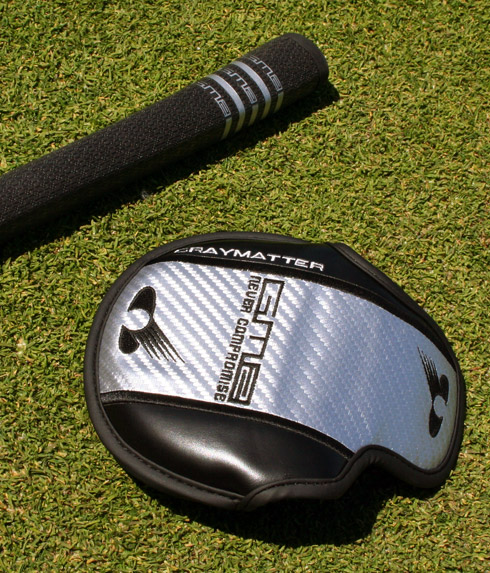
The headcover features the silver/black theme and mimics the putter face insert with an attractive woven appearance.
The grip that comes with the GM2-HM is thin, oblong grip similar to that found on Scotty Cameron putters (with his “Baby-T” grip). I was instantly very comfortable with the grip. I prefer a 33″ putter, so I found the grey lines at the top of the grip (see the picture above) to be quite useful in placing my hands on the grip at the same height every time.
The headcover is an attractive silver and black affair that features a magnet closure. The silver portion features a look similar to the aluminum-infused composite insert on the putter face, and it catches the light quite magnificently.
The magnet closure frees you from worrying about ripping velcro while someone else is putting, and you can stick the headcover to your 4-iron while you putt. Or, if you chip on and leave the putter nearby, you can step on the head of your wedge to raise the grip, grab the wedge, and use it to pick up the headcover. I’m not a particularly lazy golfer, but the less bending I have to do the better.
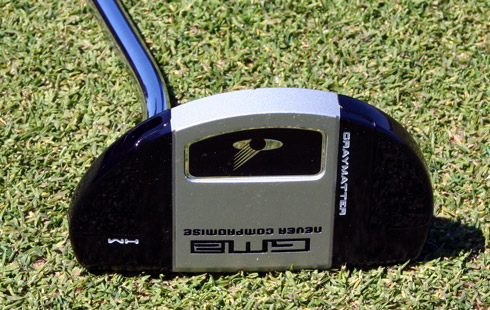
Though you can’t see it here, the black portions on the toe and heel are where Never Compromise engineers hid tungsten weights to increase the MOI and forgiveness.
Conclusion
Vijay Singh, during a troubling putting phase in late 2005, tried several Never Compromise putters. The GM2-HM, not yet on the market at the time, was one of them, and Vijay eventually turned his putting around (just as other parts of his game dipped slightly).
In the end, I’ve come to believe that your fondness for the GM2-HM will depend on what kind of putter you are. If you forward press, have a forward ball position, and swing inside/square/inside, this putter is going to work exceptionally well for you. If you don’t, it won’t. I couldn’t get over some of the changes this putter seemed to want from my putting stroke, but others who had to make no changes adored it.
For $199, you owe it to yourself to try it first.
a great putter
Majestic 😀